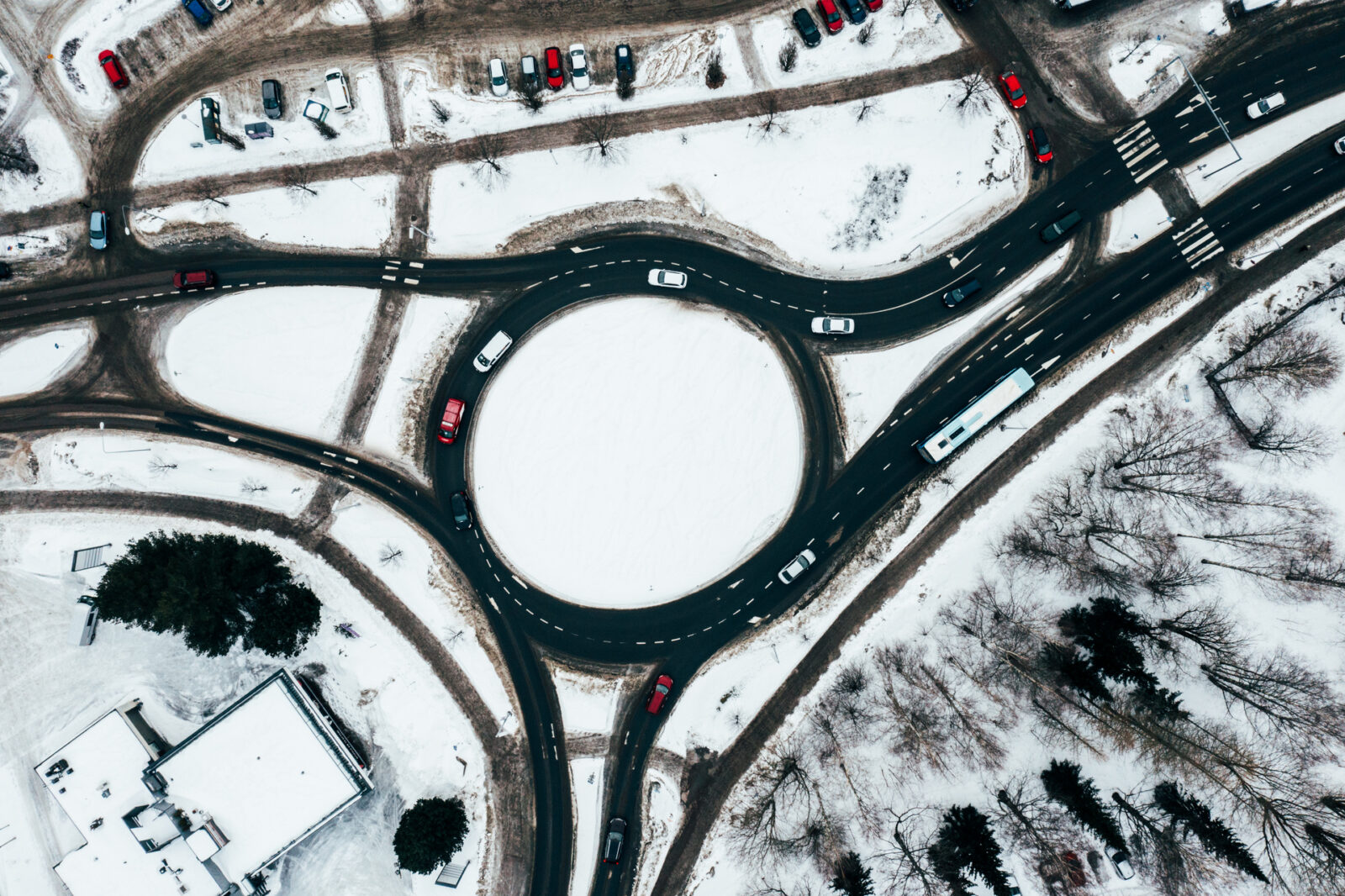A city’s traffic safety is about much more than streets and their sidewalks and traffic signs.
– Safety comes from the sum of the entire traffic environment. In addition to road infrastructure, it includes different groups of road users, including motorists, pedestrians and cyclists, as well as their mindset in traffic, says Jaana Martikainen, Traffic Engineer at the Urban Environment service area of the City of Lahti.
– Often, the main focus is in motorists, but pedestrians should also be mindful of their surroundings, instead of walking with headphones in the ears and eyes on the phone.
According to Superintendent Jouni Takala, road safety is the sum of many factors.
– Safety must also be improved from the perspective of different road users. For example, a zebra crossing may be correctly placed from the planner’s point of view, but for some reason no pedestrian is using it, superintendent Jouni Takala says.
– When an accident is reviewed by the Safety Investigation Authority, it is usually found that the accident was due to more than one cause. Safety must also be improved from the perspective of different road users. For example, a zebra crossing may be correctly placed from the planner’s point of view, but for some reason no pedestrian is using the crossing.
Takala is the Director of the traffic safety division of the Häme Police Department and one of the some 30 members of Lahti’s traffic safety working group. The working group includes experts from different areas of the city’s organisation, as well as from the Finnish Road Safety Council and various non-profits and stakeholders.
The working group is tasked with preparing and updating the traffic safety plan for the City of Lahti. It assesses the current state of traffic safety, monitors road accident statistics and reviews how traffic safety could be improved through resident surveys and other means.
Building on earlier foundations
Urban planning is an ongoing process as the city lives and grows. Improving traffic safety is a key aspect of this planning.
– Urban planning is quite a balancing act, and many factors need to be taken into account when planning new areas or improving existing ones, Martikainen says.
Given enough space, building safe road infrastructure and solutions is fairly straightforward. However, in old and densely built areas, not everything is possible at the snap of a finger.
– For example, urban planning in the city centre must be done on the terms of existing structures.
The situation is easier in areas such as Ranta-Kartano, where clear routes for pedestrians and bicycles are built gradually.
Cooperation between the city and the police is essential to ensuring that traffic solutions are sensible for all road users.
– For example, speed limits should be set at a level that makes sense and motivates road users. It is also easier for the police to supervise rules that are considered just, Martikainen says.
Confusion over e-scooter traffic rules
Traffic flows and planning in Lahti have been heavily influenced by the completion of the southern ring road, which has shifted heavy traffic away from the city centre in particular. Another significant recent trend is the growing popularity of electric scooters.
According to Jouni Takala, electric scooters are a good example of how traffic is changing.
– I don’t wish to cause confrontation, but electric scooters are a new phenomenon that causes certain issues. People don’t know what to think about them or how to use them, and supervising them is difficult. This is all reflected in the outcome.
Takala and Martikainen are concerned that it isn’t always clear to users of e-scooter what rules to follow – and this is not just the fault of the riders.
– Many people riding e-scooters are too young to have taken driving lessons, and the rules to be followed in traffic aren’t necessarily taught in school, either. Some people also think that the permitted operating area indicated by the scooter company means that it’s allowed to ride the scooter anywhere within that area, Takala says.
Traffic safety has seen improvement
Traffic safety in Lahti has developed in a positive direction. Despite the small spike in accidents in 2023, traffic safety has improved steadily in recent years and the number of accidents leading to death and injury has been in decline. In half of the cases, the injured person is the driver or passenger in a passenger car. Pedestrians account for 10 per cent of injuries and cyclists 17 per cent.
According to Jouni Takala, respect for the rules related to zebra crossings has improved in Lahti, for example.
– Compared to national statistics and other cities, Lahti has no cause for shame in the area of safety.
Traffic safety is also about communication and how different people experience and view things.
– To be sure, there are problems in all cities, but it’s also good to bring attention to the positives. In Lahti, for example, Uudenmaankatu is an efficient incoming route to the city, and the traffic on Vesijärvenkatu flows well, Takala says.
Traffic jams in Lahti are also fairly small.
– Traffic congestion in Lahti is usually temporary and localised, and we are working on solutions to address traffic jams. After all, rush hour in Lahti means five cars in line at 7.30 in the morning and 4.30 in the afternoon, says Jaana Martikainen.
On the whole, the majority of those injured in traffic accidents are drivers and car passengers. Relative to the age group and share of total population, the group that features most prominently in accident statistics are young people aged 15 to 17. Overall, the risk of accident is higher immediately after receiving a driving permit and other associated milestones.
Text: Sami Turunen
Photos: Lassi Häkkinen
Full story published in the Kaupunkilainen magazine number 1/24.
